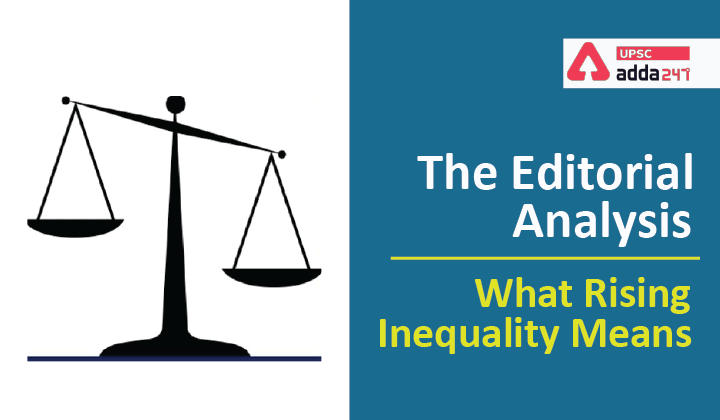Table of Contents
Rising inequality: Relevance
- GS 1: Salient features of Indian Society, Diversity of India.
Rising inequality: Context
- The COVID-19 pandemic has exposed the stark divide between the rich and the poor. Inequality in our country can be seen from the following facts.
- Top 10% of the global population share 52% of the total income, while the bottom half survives with a mere 8.5% of it.
- In terms of wealth, the top 10% of the global population own 76% of the total wealth, while the bottom 50% share a mere 2%.
Inequality around the world
- The top 10% have an income share of 36% in Europe vis-à-vis the top 10% with a share of 58% of the total income in West Asia and North Africa. It means inequality is moderate in Europe and sharp in Africa.
- There is a theory that with increase in national income, inequality increases. This theory, however, does not hold true in many cases.
- For example, high-income countries such as the U.S. have higher levels of inequality as against countries such as Sweden, which have moderate levels of inequality.
- Similar contradictions are also seen when we contrast middle-income nations such as Brazil, India and China as against Malaysia and Uruguay.
- So, it can be said that inequalities around the world are less due to rise in the average income and more due to the poor redistributive policies.
What rising inequalities means
- Wealth concentration and rising inequality is making nations wealthier but government poorer. It is because resources are limited that are gradually moving into private hands.
- The scenario is undoubtedly an outcome of the ineffectiveness of redistribution measures and also a complete absence of measures that discourage accumulation.
- Some additional features of this exposition of inequality also relate to imbalance of women’s share in income.
- It also shows the ecological inequities indicated by the differential carbon emission levels.
Also Read:




 TSPSC Group 1 Question Paper 2024, Downl...
TSPSC Group 1 Question Paper 2024, Downl...
 TSPSC Group 1 Answer key 2024 Out, Downl...
TSPSC Group 1 Answer key 2024 Out, Downl...
 UPSC Prelims 2024 Question Paper, Downlo...
UPSC Prelims 2024 Question Paper, Downlo...
